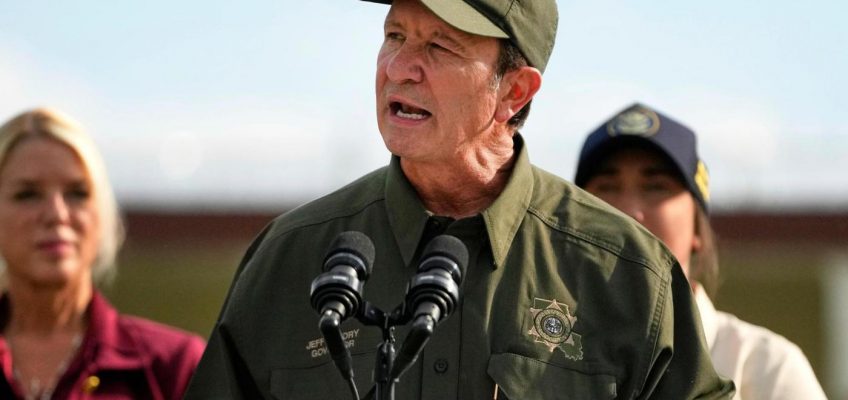By MAYA SWEEDLER
WASHINGTON (AP) — Nearly two years after the Oct. 7, 2023, attacks in Israel and the country’s ensuing invasion of the Gaza Strip, Americans are more divided on the Israeli-Palestinian conflict than they were before the war – and concerns are mounting about the safety of Jewish communities at home.
Related Articles
US Treasury sanctions Mexican companies accused of aiding Sinaloa cartel’s fentanyl production
Greta Thunberg is among flotilla activists deported from Israel. Others remain in prison
Hurricane Priscilla lashes western Mexico with heavy rain and strong winds
Fishermen in Trinidad and Tobago fear for their lives and jobs after US strikes in the Caribbean
The new leader of Japan’s ruling party, poised to be first female prime minister, faces challenges
The partisan split in public opinion on Israel predates the current war with Hamas, but recent polling suggests that some Americans have lost sympathy with the Israelis over the course of the war. Even as Israel and Hamas begin indirect talks over a U.S.-proposed peace plan that’s drawn international support, these shifts in public opinion could outlast the current conflict.
The war has amplified debates in the U.S. not just about foreign policy, but also about the safety and visibility of Jewish communities in America, where fears of discrimination are rising alongside growing divides over Israel. The same polls show that U.S. adults are also concerned about anti-Muslim sentiment, but there hasn’t been a similarly dramatic shift. High-quality polling of Muslim or Arab Americans is rare, in part because of small sample sizes.
Jewish community leaders and security experts stressed the need for security during periods of heightened visibility, such as the High Holidays, after multiple attacks against Jews in the U.S. this year. Those worries were thrown into even sharper relief last Thursday when an attacker drove a car into people outside a synagogue in England on the holiest day of the Jewish year, leading to two deaths.
In its most recent annual survey of Jewish Americans conducted in October and November 2024, the American Jewish Committee, a nonpartisan advocacy group that seeks to broadly represent Jews in the U.S. and abroad, found that about 7 in 10 respondents said they thought Jews in the United States were less secure than a year earlier.
“The number one reason given for why they feel less secure as Jews in America was the Israel-Hamas war,” said Holly Huffnagle, the Director of Antisemitism Policy at AJC.
A growing divide on the U.S.-Israel relationship
Over the last few decades, Americans of both parties have generally been more sympathetic toward the Israelis than the Palestinians.
FILE – A student wrapped in an Israeli flag listens to Pro-Palestinian protesters gathered on campus at the University of Texas at Austin, April 30, 2024, in Austin, Texas. (AP Photo/Eric Gay, File)
That’s changed since the war began. American sympathy for Israelis hit an all-time low in 2025, falling beneath 50% for the first time in almost 25 years of Gallup’s annual tracking of this measure, driven largely by drop-offs among Democrats and independents.
Sympathy for the Palestinians has also increased in Gallup’s polling, with about one-third of U.S. adults saying they sympathize more with the Palestinians this year.
In a recent survey, the Pew Research Center found that just 31% of Americans thought the U.S. was providing the “right amount” or “not enough” military assistance to Israel in its military conflict with Hamas, although large shares said there was “too much” support or expressed uncertainty.
This parallels deep dissatisfaction with the Israeli government’s handling of the war. About half of Americans say the military response from Israel in the Gaza Strip has “gone too far” in the most recent AP-NORC survey. Two years ago, shortly after Hamas launched its assault on Israel in which the group killed about 1,200 people and took 251 hostages, that figure was 40%.
In a Washington Post poll of Jewish Americans conducted in early September, about half also said they disapproved of the military action Israel has taken in Gaza, with an even higher share, 61%, saying they think Israel has committed war crimes against Palestinians in Gaza.
While partisanship has long been a dividing line on views of Israel, age is an increasingly noticeable cleavage. Pew found that about 4 in 10 adults under 30 thought the U.S. was providing “too much” aid to Israel, compared to about one-third of adults overall. And an AP-NORC poll from March found that younger Americans were less likely to say Israel and the U.S. were “close allies.” About one-quarter of adults under 30 said Israel was a close ally, compared to around half of adults over the age of 60.
Rising concern about treatment of American Jews
As attitudes toward Israel shift, new concerns about American Jews are emerging.
In 2018, 11 Jewish Americans were killed in Pittsburgh in the deadliest attack on a Jewish community in the U.S., prompting the AJC to relaunch its antisemitism survey to see whether the shooting had served as a “wake-up call” for American Jews, Huffnagle said. The share of Americans who say there is at least some discrimination against Jews has risen since 2021, according to Pew.
In subsequent surveys, older Americans of both parties were more likely than younger Americans to say there is at least “some” discrimination against Jews. And in 2024, Pew found the share of Americans who said there was “a lot” of discrimination against Jews had doubled compared since 2021.
Between 2021 and 2025, the share of adults who said they were “very” or “somewhat” satisfied with how Jewish people are treated fell from about half to 42%, according to Gallup. That represented the biggest decrease in total satisfaction among the eight racial or ethnic groups Gallup asked about.
Anti-Muslim language has also emerged in the New York City mayoral race, where Zohran Mamdani would become the city’s first Muslim mayor if elected. Concern about discrimination against Muslims was about as high as concerns about discrimination against Jews in the 2024 Pew survey. And similar shares of U.S. adults said they were “satisfied” with the treatment of Jewish and Arab people, according to Gallup.
Jewish Americans express new worries
These concerns are particularly acute for many Jewish Americans. The AJC found in its 2024 survey that about 9 in 10 Jews said antisemitism in the U.S. had increased in the previous five years and since the Oct. 7 attacks.
Dusk falls as children play at a temporary tent camp for displaced Palestinians in Deir al-Balah, in the central Gaza Strip, Monday, Oct. 6, 2025. (AP Photo/Abdel Kareem Hana)
The survey also found that many Jewish Americans are modifying behavior. When asked whether they had avoided three specific actions out of fear of antisemitism — including actions that publicly identified them as a Jew in physical spaces or online — 56% of respondents said they had avoided at least one. Three years ago, that figure was 38%.
Fracture points are emerging within Jewish communities too. Protests on college campuses and relating to Israel have included Jewish Americans on both sides, and Jewish organizations have made statements in support of and in opposition to U.S. and Israeli handling of the war in Gaza. In recent months, however, Jewish-American organizations have been more vocal about the humanitarian crisis in Gaza.
Even though the conflict is far away, the war has put some American Jews with connections to Israel in a challenging position.
One is Nathalie Shushan, 33, who lives in Manhattan and is of Egyptian-Jewish heritage. Since the war began, she’s felt afraid to talk to people who might not agree with her on Israel. “You want to be able to open a sincere dialogue in order to kind of bridge this gap,” she said. “It feels really hopeless and sometimes it feels really scary to like, try and engage in that way.”




